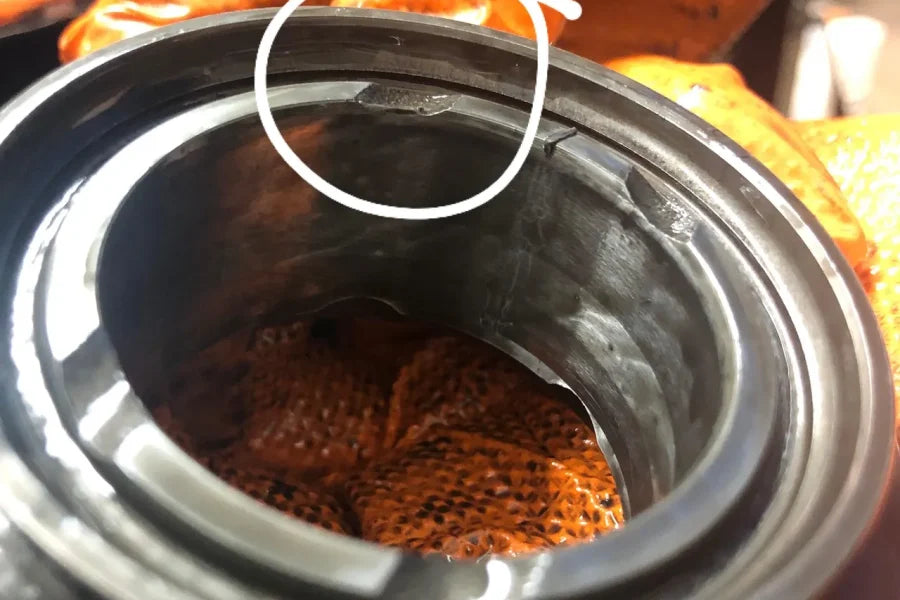We’ve rebuilt hundreds of Mazda transmissions, and have noticed a few common failure modes for these transmissions. These failures aren’t typically caused by wear and tear, or abusive driving, and many of them are from low mileage transmissions. This page is to showcase some of the machining failures we’ve come across in Mazda transmissions. Knowing how these transmissions fail allows us to address these failures in our builds, and ensure that these issues don’t show up on your way to work, or worse, on the track.

Above shows 3rd gear in an RX-8 Transmission factory oiling flaw. Those grooves should be smooth and cut all the way, the one in the top middle of the picture has a massive burr. That restricts oiling and causes heat and burn-up issues.

Next is a main-shaft fluid journal. We had a suspicion that this box has run hotter than normal and it’s only got 1300 street miles on it! This picture shows the oil grooves in the journal were cut incorrectly on the left shaft! Normal oil grooves are on the right shaft.

This one isn’t necessarily a machining failure, but instead a poor choice of materials and manufacturing process. The above plate holds both middle main shaft bearing, and middle countershaft bearing in place in the transmission. In stock form, this is a cast aluminum plate. When a catastrophic failure happens like above, the transmission is typically ruined. Even before catastrophic failure, this plate tends to warp and stretch, allowing slack in the gear stacks, that expedites wear on the gears, and can cause other issues in the transmission. We’ve designed our own version of this plate. Not only is it machined from steel instead of aluminum, but we also designed this plate to allow for proper gear stack settings that you can’t quite achieve with factory shims. Almost every gearbox we’ve torn apart that has been on a track, or has any power adders on the car shows this plate to be tweaked, bent, or cracked.

Another example showing how these fail before they explode. You can see that it is firmly seated to the case underneath the bolts. Look in-between the bolts and you see the gap between the transmission case and the bearing plate. That plate should be firmly against the transmission case, all the way around. That is a bent mid bearing plate! We have seen a lot of these crack in this upper section as well.

